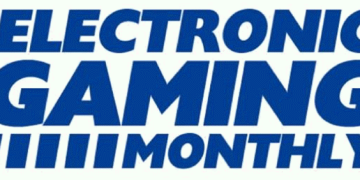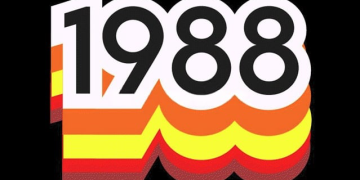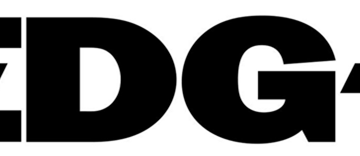Jamie Carter, Senior Contributor
2025-09-01 06:26:00
www.forbes.com
Northern Lights erupt in brilliant Aurora sky over Northern Minnesota Little Sand Lake in Remer
getty
A forecast for potentially “severe” Northern Lights overnight on Monday, Sept. 1 and Tuesday, Sept. 2, 2025, has put the spectacular light show back in the news.
While the record-breaking displays of May and October in 2024 are unlikely to be repeated for stargazers this week, it could be a great show, and a taster for the 2025-26 Northern Lights viewing season.
That season begins, ironically, with September’s longer nights and equinox, and it could be one of the best until the mid-2030s, according to experts.
Northern Lights: ‘Solar Maximum’ Period Continues
The Northern Lights — also called the aurora borealis — occur when charged particles from the sun accelerate down Earth’s magnetic field lines and collide with molecules high in Earth’s atmosphere. That interaction produces the green and red lights. However, it’s when there are more charged particles that the aurora results. That happens when the sun is at its most active.
“We are currently in solar maximum, when the sun is most active, leading to higher chances of solar storms,” said aurora hunter Wil Cheung, who is hosting an aurora cruise to Norway in October, in an interview. “This period should continue for a few more years, but from 2027 onwards we would expect a gradual wane in activity.”
Solar maximum is the peak of our star’s cycle. “The eleven-year solar cycle is now at what we call the solar maximum,” said Chad Blakely, founder of Lights Over Lapland, in an email. “This means the frequency and intensity of the solar storms that interact with our atmosphere, causing the aurora, are at their most intense.”
Northern Lights: A ‘Double Peak?’
NASA and NOAA scientists think the peak of the current solar cycle was in Oct. 2024, though isolating a specific date is not easy. “No one will actually know until long after the maximum has occurred, but there have also been instances of double peaks in the past,” he said. These double peaks occur when solar activity spikes, subsides, and then returns a few years later. That could be exactly what’s happening now — or about to happen in the coming months.
“2025 may be the last truly spectacular year of this cycle.” says Silvena Nonev, a travel expert at Scandinavia Private Tours. “Once the solar maximum passes, displays will gradually weaken until the mid-2030s. That makes this year a rare opportunity for travelers who want to see the Northern Lights at their absolute peak.”
Northern Lights: Sunspot Bands Are Driving Aurora
Displays of the Northern Lights can be traced back to sunspots. Counted every day since 1611, these black zones on the sun’s surface are cooler regions of complex magnetic activity. They often produce solar flares, which regularly lead to huge clouds of supercharged particles being flung into the solar system. These are called coronal mass ejections, and when they head in the direction of Earth, they can trigger geomagnetic storms and displays of aurora. “How we determine the peak of solar cycles is based on the placement of solar sunspots,” said Cheung. “It’s clear that there are two distinct areas where these solar sun spots occur — the Southern Hemisphere and the Northern Hemisphere.”
Last year’s most dramatic storms were linked to bands of sunspots from the sun’s southern hemisphere. Now, the northern band is closing in toward the solar equator, raising the prospect of even more storms. This pattern suggests the current solar maximum could be prolonged.
“We could be looking at the most intense solar maximum on record, with some forecasters predicting this winter to be one of the best ever times to experience the Northern Lights,” said Blakely.
World map of intensity and visibility of Northern Lights. The image was created with Apple Keynote software. Built-in maps of Apple Keynote were used.
getty
Northern Lights: Why Aurora Chasers Head To The Far North
Best for whom? On May 10, 2024, an extreme geomagnetic storm caused aurora displays worldwide and was rated as G5 — the most intense kind. That had not been seen since Oct. 31, 2000. Something similar was repeated on Oct. 10, 2024, and again on Dec. 31, 2024. On some of those occasions, aurora were seen as far south as Florida as the auroral oval — which typically sits at about 65 degrees north latitude — stretched far to the south. But worldwide auroras are not the norm, even during solar maximum.
The best places to see the Northern Lights will always be under that auroral oval. “It is important to note that while displays at lower latitudes like northern U.S. and mid-locations in Europe will drop, locations at higher latitudes — in Canada, Norway, Iceland, Sweden and Finland — will continue to have aurora displays throughout the entire solar cycle,” said Cheung.
It’s from these locations that you’ll get more frequent opportunities to see the Northern Lights, but you’ll also have a chance of getting the best views of them overhead instead of in the distance. It’s here where you’ll have the best chance of seeing the auroral corona above your head.
Northern Lights: An ‘Equinox Alert’ Coming Soon?
It’s possible that we’re on the cusp of the last chance of strong aurora in the U.S. and Europe until the mid-2030s. On Sept. 22, 2025, it’s the southward equinox, and it’s when auroras tend to peak. According to the Russell-McPherron effect, a concept introduced by scientists at UCLA in 1972, Earth’s axis aligns perpendicularly to the sun-Earth line during an equinox. That creates ideal conditions for a reconnection between the solar wind and Earth’s magnetic field.
It can open “cracks” in Earth’s magnetosphere, allowing the charged particles from the sun that make up the solar wind to penetrate more effectively. These particles funnel along Earth’s magnetic field lines towards the poles, intensifying auroral displays. There can be a lag, making early October a prime window for aurora viewing not just in the far north, but at mid-northern latitudes.
It’s an experience that may not come again for a decade or more.
Wishing you clear skies and wide eyes.
Enhance your driving experience with the P12 Pro 4K Mirror Dash Cam Smart Driving Assistant, featuring Front and Rear Cameras, Voice Control, Night Vision, and Parking Monitoring. With a 4.3/5-star rating from 2,070 reviews and over 1,000 units sold in the past month, it’s a top-rated choice for drivers. The dash cam comes with a 32GB Memory Card included, making it ready to use out of the box. Available now for just $119.99, plus a $20 coupon at checkout. Don’t miss out on this smart driving essential from Amazon!
Help Power Techcratic’s Future – Scan To Support
If Techcratic’s content and insights have helped you, consider giving back by supporting the platform with crypto. Every contribution makes a difference, whether it’s for high-quality content, server maintenance, or future updates. Techcratic is constantly evolving, and your support helps drive that progress.
As a solo operator who wears all the hats, creating content, managing the tech, and running the site, your support allows me to stay focused on delivering valuable resources. Your support keeps everything running smoothly and enables me to continue creating the content you love. I’m deeply grateful for your support, it truly means the world to me! Thank you!
|
BITCOIN
bc1qlszw7elx2qahjwvaryh0tkgg8y68enw30gpvge Scan the QR code with your crypto wallet app |
|
DOGECOIN
D64GwvvYQxFXYyan3oQCrmWfidf6T3JpBA Scan the QR code with your crypto wallet app |
|
ETHEREUM
0xe9BC980DF3d985730dA827996B43E4A62CCBAA7a Scan the QR code with your crypto wallet app |
Please read the Privacy and Security Disclaimer on how Techcratic handles your support.
Disclaimer: As an Amazon Associate, Techcratic may earn from qualifying purchases.

























































![[5-Yrs Free Data Recovery] GIGASTONE 256GB SD Card, 4K Camera Pro, A1 V30 SDXC Memory…](https://techcratic.com/wp-content/uploads/2025/09/51F2IcqgHrL._AC_SL1000_-360x180.jpg)
















































